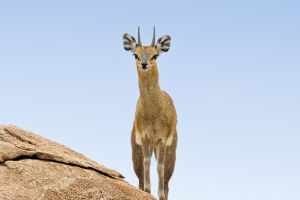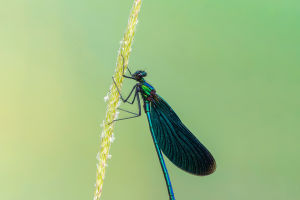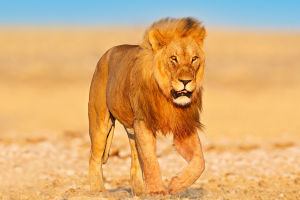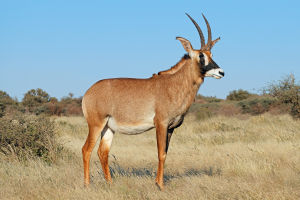
The klipspringer (Oreotragus oreotragus) is a small, unique antelope native to sub-Saharan Africa, particularly in rugged, rocky regions across eastern and southern Africa.
These creatures thrive in some of the most difficult terrain on the continent, an environment that keeps them safe from many predators.
Perfectly Adapted to Rocky Terrain
The klipspringer's agility can be attributed to its special hooves. Unlike other antelopes, its hooves are cylindrical and pointed, allowing the klipspringer to balance on tiny ledges and uneven surfaces. This adaptation helps them leap with pinpoint precision from rock to rock, using minimal surface area to support their body. Additionally, klipspringers weigh only around 24 pounds (11 kg) on average, which reduces stress on their hooves and makes balancing easier.
Their habitat on steep cliffs and rocky slopes makes them naturally elusive to predators like leopards and hyenas. The klipspringer's climbing skills and agility, paired with its light build, give it a significant survival advantage in an environment that would be too difficult for many larger animals to navigate.
Camouflage and Survival Skills
Klipspringers have a coarse, brownish-gray coat that blends well with the rocks and shadows in their environment. This camouflage, paired with their small size, allows them to remain relatively undetected by predators. Their excellent eyesight and keen sense of smell also help them detect danger quickly, enabling them to escape into the rocky cliffs and slopes with ease.
Klipspringers are also known for their unique “sentinel” behavior, where one partner in a pair stands guard while the other forages or rests. If a predator is spotted, the sentinel klipspringer will alert its partner with a sharp, shrill bark, signaling it’s time to flee to higher ground.
Social Structure and Behavior
Klipspringers are generally monogamous, with strong bonds forming between pairs. A pair will often occupy and defend a territory that spans several acres, marking it with scent from special glands located on their faces. This territorial behavior is particularly essential in areas where suitable rocky habitats are limited, as it ensures the pair has exclusive access to safe resting spots and feeding grounds. Males take a more active role in territorial defense, while both partners maintain vigilance over their shared territory.
Diet and Water Conservation
Klipspringers are herbivores, primarily consuming a diet of leaves, shoots, flowers, and fruits found on rocky outcrops. Remarkably, they can survive long periods without direct water sources, as their diet provides most of their hydration. This is a vital adaptation for surviving in the arid and semi-arid regions they inhabit. Their digestive system is efficient at extracting moisture from food, making them highly adapted to life in regions where water is scarce.
The klipspringer is an extraordinary example of nature’s ability to adapt and survive in the most challenging environments. From their specialized hooves to their highly tuned senses and unique social structures, klipspringers have evolved to thrive on rocky, steep slopes that few other animals can call home.
So, Lykkers, these remarkable antelopes continue to be a symbol of resilience, agility, and adaptation, offering a fascinating glimpse into how life persists in even the most rugged landscapes. Whether seen from afar, gracefully navigating rocky ledges, or perched atop a cliff with a sentinel’s watchful gaze, the klipspringer remains a marvel of the animal kingdom.
Klipspringer (Oreotragus oreotragus) Animal Call | Kruger Antelope | Stories Of The Kruger
Video by Stories Of The Kruger


